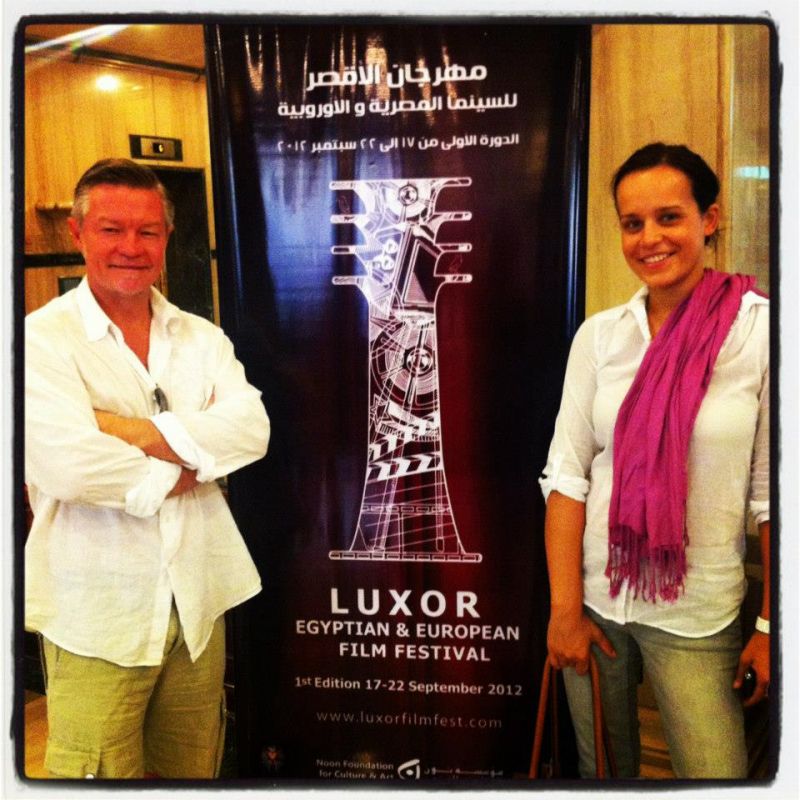|
|
||
|
Pro Tools
FILMFESTIVALS | 24/7 world wide coverageWelcome ! Enjoy the best of both worlds: Film & Festival News, exploring the best of the film festivals community. Launched in 1995, relentlessly connecting films to festivals, documenting and promoting festivals worldwide. Working on an upgrade soon. For collaboration, editorial contributions, or publicity, please send us an email here. User login |
Le Ballon Rouge
Le Ballon Rouge, Albert Lamorisse, 1956 by Josie Ainscough Le Ballon Rouge is a short, beautifully made film shot in colour, which tells the story of a little boy who finds a bright red balloon tied to a lamppost. He unties it, and finds out that it has a mind of its own. The balloon follows him around, bobbling along behind him, on the bus to school, even getting him into trouble with his head teacher. A group of bullies, jealous of the boy and his friendly balloon, chase them through the streets and destroy it. The film ends with all the balloons of Paris float to the sad boy and fly him away into the sky. Le Ballon Rouge was filmed in the Belleville area of Paris, which at the time was made up of slums. Apparently only five per cent of what you see in the film is left today, as the film’s release prompted the demolition of the slums, which were replaced with housing projects in the 1960’s. The old slums, now replaced with standard housing blocks In the film the balloon is a symbol of hope and happiness in a very grey and dreary city, the colour standing out against the murky buildings. The bullies Much of the Rue de Ménilmontant, making up most of what is left from what we see in the film, is surprisingly similar. The number 96 bus still trundles down the hill. There is a similar atmosphere to the area, as it is still a rather run down and most of the shops are boarded up. The butchers shops in the film have now been replace with halal ones. The number 96 bus on Rue de Menilmontant The church of Notre Dame de la Croix has been cleaned and glows in the sun, unlike in the film, where it looks black from the years of soot. The church is also full of modern carved sculptures, including one displayed outside. The balloon causes trouble at the church
Coincidently I found many red balloons for myself on Rue de Ménilmontant, as murals on walls and even a sad burst one on the street. 10.02.2012 | ÉCU-The European Independent Film Festival's blog Cat. : Albert Lamorisse Albert Lamorisse Albert Lamorisse Balloon Belleville Belleville, Paris Cinema of France cinema the red balloon Districts of Paris ecu ecufilmfestival Entertainment Entertainment Films Flight of the Red Balloon france indie Josie Ainscough la Croix Le Ballon Rouge Ménilmontant paris Paris Paris Red Balloon teacher The Red Balloon FESTIVALS
|
LinksThe Bulletin Board > The Bulletin Board Blog Following News Interview with EFM (Berlin) Director
Interview with IFTA Chairman (AFM)
Interview with Cannes Marche du Film Director
Filmfestivals.com dailies live coverage from > Live from India
Useful links for the indies: > Big files transfer
+ SUBSCRIBE to the weekly Newsletter Deals+ Special offers and discounts from filmfestivals.com Selected fun offers
> Bonus Casino
User imagesAbout ÉCU-The European Independent Film Festival Hillier Scott Hillier Scott (ECU)
Scott Hillier, Founder and President of ÉCU - The European Independent Film Festival
Scott Hillier is a director, cinematographer, and screenwriter, based in Paris, France. In the last 20 years, Hillier has gained international recognition from his strong and incredible cinematography, editing, writing, producing and directing portfolio in both the television and film industries.
Scott began his career in the television industry in Australia. In 1988, he moved to London getting a job with the BBC who then set him to Baghdad. This opportunity led him to 10 years of traveling around world for the BBC, mainly in war zones like Somalia, Bosnia, Tchetcheynia, Kashmir, and Lebanon. After a near fatal encounter with a Russian bomber in Tchechnyia, Hillier gave up his war coverage and began in a new direction.
He moved to New York City in 1998. He directed and photographed eight one-hour documentaries for National Geographic and The Discovery Channel. Based on his war knowledge and experience, Hillier wrote and directed a short film titled, “Behind the Eyes of War!" The film was awarded “Best Short Dramatic Film” at the New York Independent Film and TV Festival in 1999. From that he served as Supervising Producer and Director for the critically acclaimed CBS 42 part reality series, "The Bravest” in 2002 and wrote and directed a stage play called, "Deadman’s Mai l," which ran at Le Théâtre du Moulin de la Galette in Paris during the summer of 2004. He then became the Director of Photography on a documentary titled, “Twin Towers." This was yet another life changing experience for Hillier. The riveting documentary won an Academy Award for "Best Documentary Short Subject" in 2003. In 2004, Hillier changed continents again, spending three months in Ethiopia. He produced “Worlds Apart,” a pilot for ABC America / True Entertainment / Endemol. As you can see, Hillier was and is always in constant movement and enjoys working in a number of diverse creative areas including documentaries, music videos, commercials, feature and short films.
Scott studied film at New York University and The London Film and Television School. He also studied literary non-fiction writing at Columbia University. Hillier's regular clients include the BBC, Microsoft, ABC, PBS and National Geographic. Between filming assignments, he used to teach film, a Masters Degree course in Screenwriting at the Eicar International Film School in Paris, France and journalism at the Formation des Journalistes Français in Paris, France.
View my profile Send me a message The EditorUser contributionsUser links |




























